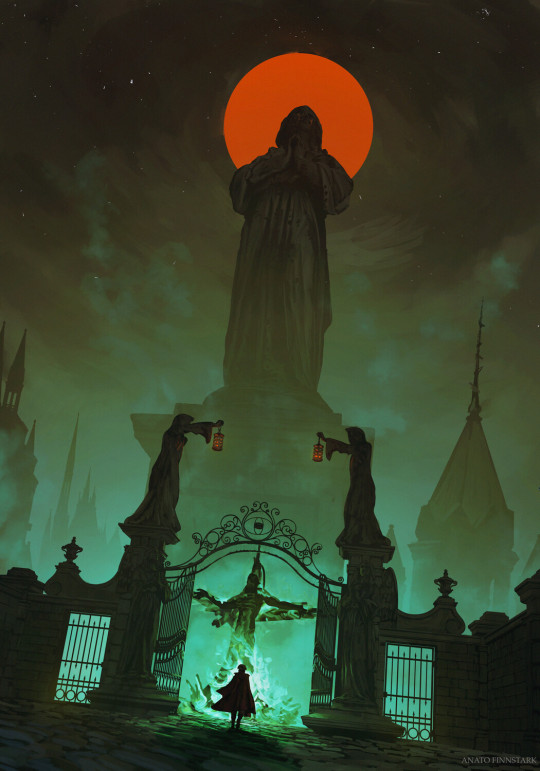Don't wanna be here? Send us removal request.
Text

“I think that’s what scares me: the randomness of everything. That the people who could be important to you might just pass you by. Or you pass them by.”
— Peter Cameron (via quotemadness)
2K notes
·
View notes
Text
“Like most others, I was a seeker, a mover, a malcontent, and at times a stupid hell-raiser. I was never idle long enough to do much thinking, but I felt somehow that some of us were making real progress, that we had taken an honest road, and that the best of us would inevitably make it over the top. At the same time, I shared a dark suspicion that the life we were leading was a lost cause, that we were all actors, kidding ourselves along on a senseless odyssey. It was the tension between these two poles – a restless idealism on one hand and a sense of impending doom on the other – that kept me going.” - Hunter S. Thompson, The Rum Diary
120 notes
·
View notes
Text






Pigeon Point lighthouse sunset.
4 notes
·
View notes
Text
Magic and The Human UI
Everything is an interface for consciousness. From your sense of self and your perceptions of the world to the tools we use and the languages we communicate with. There is nothing in the range of our experience that is not an interface for consciousness. Your mind, it’s thoughts, and the brain they occur in are experiential interfaces for consciousness.
If everything we perceive, in whatever way we perceive it, is the UI of our existence, than proceptive functions (the biological survival and propagation imperatives that propel us through life) are our operating system, the body and its brain are the hardware, and the mentation of our brains provides analytics for the purpose of problem solving based of hallucinatory sensory telemetry. This is assembled in the UI of perception in support of proceptive goals.
Beliefs are born out of mentation and augment both perception and proception via coded imperatives such as moral bevavioral modifications and predictive biases (proception and perception respectively), yet beliefs begin with the predictive hallucination that is perception and how it regards randomness and patternicity.
Superstition, belief, and their austere sibling, religion, are born out of the predictive hallucination of perception to achieve survival imperatives. Beliefs do not need to be true in order to be useful. In fact, we know that perception does not show us reality at all, only what is beneficial to sustain and propagate us biologically as individuals and as a species.
In biological terms, truth isn’t very important, and the truth is that nothing we experience can be said to exist outside of the experience of our perceptual UI. Except, perhaps, consciousness itself.
There is a growing body of evidence that suggests, in the strange language of quantum mechanics, that indeed Atman is Brahman, or that self as we experience it is merely an outer experiential emanation of an implicate consciousness beyond our limited abilities of comprehension.
A good example of how perception assigns I /Not I to self versus totality is figure-ground organization as observed in Gestalt psychology. When an observer looks at the faces-vase drawing of psychologist Edgar Rubin they will note the effect of edge-assignment on their peceptions of shape which will alternate between the figure and the ground. Perception, for proceptive reasons, assigns the edge of of self and our perception of ourselves as discrete entities. Certain altered states may shift perception from self (figure) to ground (totality).
Magic as we know it today developed from the mechanics of these three circuits through the adaptive hardware of the body and that pure acausal consciousness uses this apparatus to interface with explicate realities.
It is likely that this acausal consciousness has been “pushing into” the material universe for a very long time, and may have preceded the Big Bang. Perhaps even caused it. By pushing in, I do not me in an invasive sense, but like a germinating seed pushing its shoots through the soul, consciousnes pressing in from the implicate order of acausal reality into the realm of illusory separateness and centrality, presumably for the pure purpose of experience.
Humans have always had a sense of being something more, of being connected to something greater than ourselves, and we codified that sense of connection in a broad spectrum of mythic narratives that defined our relationships with totality. This process of mythogenesis eventually gave rise to various religions.
What’s ironic is that many of the dogmas spawned by these originally holistic narratives would end up doing more in later times by disconnecting humans from their source and denaturing the three circuits by routing them to specific objectives.
This was done with deliberation by priests who, in ancient times, were an integral part of the rising cosmopolitan militant monarchies.
The coopting of organic myths and their subsequent conversion into polemic campaigns was meant to foster xenophobia in order to justify conquests in the public mind, and they were deliberately engineered perversions of pre-existent beliefs. (We see this happening time again throughout history, and now again with the rise of White Nationalism).
It is not that the beliefs that preceded these emerging religions were necessarily better, only the coopted narratives were maliciously driven by the desires of a wealthy few to control the masses.
This deliberate manipulation or creation of myths is not inherently bad and can even be applied to positive ends. What I call mythogenesis, or the generation of personal and collective myths, can be put to good use. In the personal context it can be used to empower an individual, and as many a parable illustrates, stories do not have to be true in order to convey truth.
As you can see, belief and myth have always played at least some part in the early origins of magic. And beliefs have always been spread through oral and written traditions.
Language was the first technology of magic as is evidenced in the words “spell” (literally to spell an intent) and grimoire (from the French “grammaire” or ‘grammar’).
Consciousness uses symbols (whether visual or auditory) to transmit, receive, encode and retrieve information, and information, when conveyed to the greater consciousness, is oft spoken back to us as results.
These results do not occur by belief alone, and belief need only be held for a limited time to produce real magical effects. In fact, suspension of disbelief is really all that is required, and even that may not matter given the genuine mechanics at work.
However, beliefs as an applied magical technology work well enough to motivate personal transformation to unite (or divide) whole populations.
Key to magic are altered states of consciousness which in turn alter the functioning of our perceptive apparatus, thus augmenting its predictive bias. This acts upon the probabilistic substrate of the universe and manifest results.
It is likely that consciousness is smaller than the universe but large enough to contain it, and to plant our desires in it (as mantras, sigils or whatnot) we must project the necessary information inward in an encoded format that our conscious mind doesn’t readily recognize. We turn the reference beam of our personal hologram onto an abstraction and reflect it backwards / inward through altered individual awareness into the greater ocean of consciousness.
Because our perceptions, accurate or not, are causally conditioned throughout our lives, perception tends not to predict events to occur that have not already occurred with a measure of regularity. This is why children tend to be more magical than mature individuals. In order to bypass the tendency of perception to favor the banal, we must alter it at its root to bypass the habitual bias of years.
This can be done in many ways, and I will not cover the lot of them here, but regarding effective modern practices, sigils and mantras appear to be the most effective when coupled with excitatory or inhibitory states of consciousness (whether fevered dancing, as in the case of Voudun, or Buddhist-like meditative trances).
This late method of magic was developed over time following a wave of re-naturalization of magic in theory and practice after centuries of ignorant suppression.
The three circuits of human experiential reality, like a computer, are hackable, and because all consciousness is one in source, space-time restrictions are vaporized in altered states (at least partially if not totally) allowing the exchange of codified intentions between self and Self for their manifestation in the local universe. The predictive bias of the brain is altered when the perception of self is dissolved in an experience that mystics have termed Oneness. Desires appear to be more readily realized when their is no self to doubt the outcome.
© Jason Tiffany
14 notes
·
View notes
Text




A few more of my photos.
2 notes
·
View notes
Text






1 note
·
View note
Text



A few of my photos.
1 note
·
View note
Photo

$1 increase in minimum wage linked to 3.5% – 6% fall in suicide rate
A $1 raise in minimum wage was associated with a drop in suicide rates of between 3.5 to 6% in people with a high school education or less. The effect, researchers say, appears to be strongest during times of high unemployment.
140 notes
·
View notes
Photo

!!!IMPORTANT FOR BLACK US VOTERS!!!
I saw this on Facebook and went to check my registration status, sure it was fine because I voted recently, but I put in the info and it said I’m not registered
PLEASE, especially if you’re a Black voter, check your registration status at vote.org
258K notes
·
View notes
Text
“I’m not just falling in love with you. I’m falling into you. You’re an ocean, and I’m falling in, drowning in the depths of who you are. Like you said, it’s scary in a way, but it’s also the most amazing thing I’ve ever experienced. You are the most amazing thing I’ve ever experienced.” - Jasinda Wilder, Falling Into You
1K notes
·
View notes














